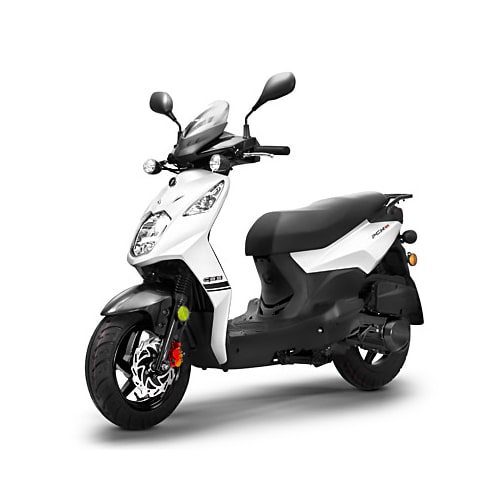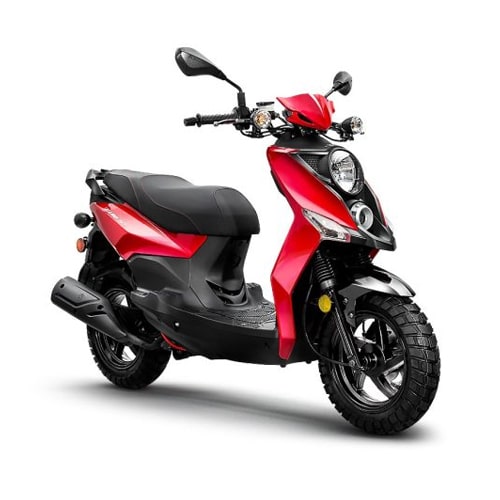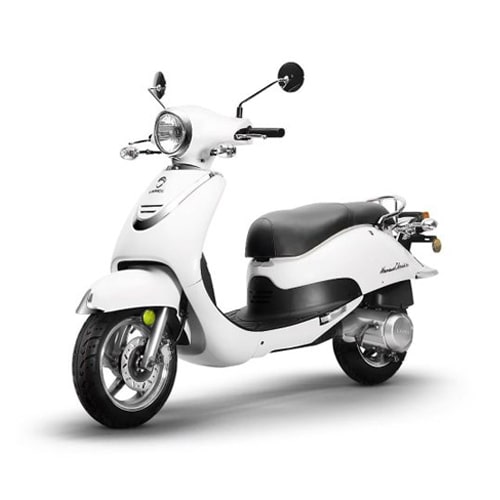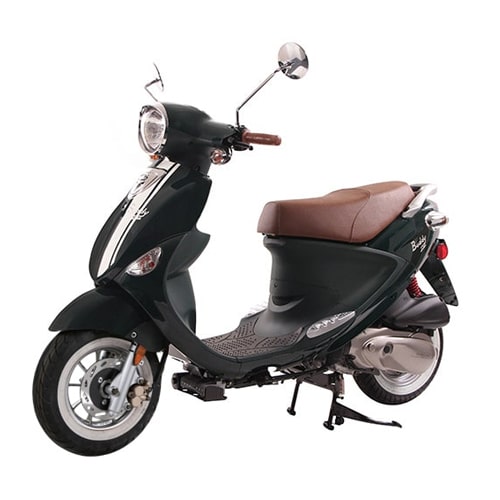In recent years, electric bikes have become increasingly popular as a mode of transportation. With their ability to provide eco-friendly, cost-effective, and convenient transportation, electric bikes are becoming the future of mobility. Electric bicycles offer a sustainable solution to urban mobility challenges. Here, explore the advantages of electric bikes, their impact on the environment and society, and why they are quickly becoming the preferred mode of transportation for individuals and communities worldwide.
Electric Bikes: What to Know Before Buying an e-Bike
There are several important factors to remember when deciding to purchase an e-bike. Electric bikes, or e-bikes, have gained popularity in recent years because of their capacity to provide an extra boost while pedaling, making cycling more accessible and enjoyable for many people. Here are some key points to consider before buying an e-bike:
- Purpose: Determine the primary purpose of the e-bike. Are you looking for a daily commuter bike, a mountain bike for adventures off the road, or a time-out bike for weekend rides? Understanding your intended use will help narrow down the options and find the most suitable bike for your needs.
- Motor and Battery: Pay attention to the motor and battery specifications. The motor power, measured in watts, determines the level of assistance the e-bike provides. Consider the battery capacity and range, as these factors will impact how far and long you can ride before recharging.
- Riding Experience: Test-riding different e-bike models will get you a feel for their handling, comfort, and performance. Pay attention to the riding position, suspension, and overall ride quality to ensure a pleasant experience.
- Legal Regulations: Learn the local regulations regarding e-bikes, as laws governing their use may vary by region. Some areas have specific speed limits, age restrictions, or other rules for bikes, so it’s essential to be aware of these before making a purchase.
- Maintenance and Support: Consider the availability of maintenance services and customer support for the e-bike brand you are considering. Reliable after-sales support and access to spare parts can significantly impact your bike’s long-term enjoyment and performance.
- Budget: Determine your budget for the e-bike purchase, considering not only the initial cost but also potential expenses for accessories, maintenance, and upgrades. Remember that investing in a quality e-bike can provide long-term value and enjoyment.
What’s the difference Between e-bikes & Electric Bikes?
Regarding the difference between e-bikes and electric bikes, it’s essential to understand that these terms are interchangeable, but there are some distinctions to be aware of.
Electric Bikes (e-bikes) vs. Regular Bikes:
- An electric bike has an integrated electric motor that provides propulsion during cycling. This motor assists the rider’s pedal power, making cycling more accessible, mainly uphill or over long distances. Source: 1.
- The difference between an electric bike and a standard bike lies in the integrated electric motor, providing varying levels of assistance to the rider’s pedaling efforts. This assistance can make cycling simpler, faster, and less stressful, particularly for commuting or long-distance travel. Source: 2.
- Electric bikes come in different classes, such as Class 1, 2, and 3, which differentiate between the top speeds and the components used. Source: 3
Design and Functionality:
- Electric bikes boost the rider’s pedaling efforts, making cycling more straightforward and accessible for many individuals. They are particularly suitable for riders who don’t need to exert themselves extensively and want a transportation mode for shorter rides. Source: 1.
- The rules and regulations governing the use of electric bikes can vary based on the specific class of the bike, and it’s essential to confirm with local authorities to ensure compliance with the permissible areas for each e-bike class. Source: 3.
Battery and Motor:
- Electric bikes have an integrated electric motor and a battery that stores the power needed to provide electric assistance during cycling. The engine can be on the back wheel, and the battery’s capacity determines the range and level of assistance the e-bike can provide. Source: 4
What are the Average Costs of Electric Bikes?
The average cost of electric bikes varies based on quality, design, and additional features. Here’s a breakdown of the average costs based on the information from various sources:
1. Average Price Range:
- An e-bike costs about $2,000, with entry-level electric bikes starting at around $1,000 and high-end models costing $6,000 or more. Source: 1.
2. Factors Affecting Cost:
- The type of motor, battery size, and additional features influence the price of electric bikes. E-bikes designed to integrate electrical components into the bike frame may cost more than those with externally mounted components. Source: 1.
3. Cost-Effectiveness:
- Electric bikes are considered a cost-effective mode of transportation, with studies reporting that charging an electric bike battery costs 8 cents, providing approximately 20 to 40 miles per charge. Source: 2.
4. Charging Costs:
- Charging an electric bike battery can cost based on electricity prices. On average, the cost to charge an electric bike battery is around 22 pence (approximately 30 cents) in the US, making it a cost-effective alternative to traditional fuel-based transportation. Source: 3.
5. Additional Considerations:
- Electric bikes require a more significant initial investment and have additional maintenance and charging costs compared to traditional bikes. However, they are still a great way to explore the outdoors or local bike trails. Source: 4.
What class of e-bike is the Best?
When considering the best class of e-bike, it’s essential to understand the different classifications and their features. In the U.S., there are three main classes of e-bikes:
1. Class 1 e-bikes:
- These e-bikes only assist when you pedal and stop helping when the e-bike reaches 20 mph.
- Class 1 bikes are the most affordable and generally accepted on city streets and many bike paths and are starting to be allowed on traditional mountain bike trails in some areas. Source: 1.
2. Class 2 e-bikes:
- Like Class 1, Class 2 e-bikes have a pedal-assist mode up to 20 mph, but they also offer a throttle-powered mode that doesn’t need pedaling.
- Class 2 e-bikes are primarily allowed in the same places as Class 1 e-bikes, as both types top at 20 mph for motor assistance. Sources: 1.
3. Class 3 e-bikes:
- Class 3 e-bikes are solely pedal-assist like Class 1, but the pedal assist stops when the e-bike reaches 28 mph.
- These bikes are generally allowed in some areas on city streets, bike paths, and traditional mountain bike trails. Source: 1.
The best class of e-bike depends on individual preferences, riding requirements, and the specific regulations in the area where you’ll use the e-bike. Class 1 e-bikes are generally more universally accepted and affordable, while Class 2 and 3 e-bikes offer additional features such as throttle-powered modes and higher speed limits.
What is the Average Lifetime of an e-bike?
The average lifetime of an e-bike can vary based on several elements, like maintenance, usage, and the quality of its components. Here’s a summary of the information from the search results:
- Motor Lifespan: The motor of an e-bike is a crucial component, and it generally lasts longer than other parts of the bike. With proper care, e-bike motors can last between 4 to 10 years. Source: 1.
- Overall Lifespan: On average, e-bikes last around ten years, but this can vary depending on the type of bike and how you’ll use it. With conscientious care and maintenance, an e-bike can last well over a decade. Source: 2.
- Battery Lifespan: The lifespan of an e-bike battery is typically around two years, but this can change based on factors like usage patterns, charging habits, and riding conditions.
- Component Longevity: The longevity of other components, such as brakes, gears, and tires, is proportional to the frequency of usage. Routine maintenance can extend the lifespan of these components. Source: 3.
What are the Pros & Cons of an Electic Bike?
Pros:
- Assistance with Pedaling: The main advantage of an e-bike over a standard one is the electric motor, which helps you pedal and makes it easier to ride. Source: 1.
- Environmentally Friendly: Electric bikes are considered more eco-friendly than conventional cars or motorbikes, as they use fewer fossil resources and contribute to reducing carbon footprint. Source: 2.
- Cheap Transportation: Electric bikes are one of the most affordable ways to get around, especially compared to other transportation types. They don’t require special licenses or registrations, and there’s no need to pay for parking. Source: 3.
- Reduced Noise Pollution: Electric bikes minimize noise pollution by offering many benefits, such as motorbikes without noise, as the electric motors run quietly. Source: 4.
- Fitness Improvement: While some e-bike enthusiasts may get minimal fitness improvement due to relying on the electric mode, riders can become better with more endurance as they rely less on the battery-assisted motor for pedal support. Source: 4.
Cons:
- Cost and Weight: Electric bikes can be expensive and heavy, limiting the range. High-end models can cost three times more than standard bikes, and the added weight can affect speed and the bike’s ability to conquer steeper roads and terrains. Source: 5 and 6.
- Negative Stigma: There is a negative stigma associated with electric bikes in some places, with some people considering them lazy or older individuals who can’t cycle without assistance. Source: 5.
- Theft Risk: Expensive electric bikes can be attractive targets for thieves, and the added weight of electric bikes can make them more challenging to move and lift, requiring special equipment for transportation. Source: 7.
- Environmental Impact: E-bike manufacturing remains not environmentally friendly compared to standard bikes, and the trajectory of electric bikes in innovation may lead to increased costs over time. Source: 6.
Interested in Buying an e-bike? View our Inventory of Electric Bikes for Sale Now!
Explore various e-bike styles at EZ Bikes and Scooters. We’re passionate about electric bikes, offering a vibrant range to suit every rider. With long-lasting batteries and smooth electric motors, our e-bikes will help you conquer any journey while reducing your carbon footprint. Visit EZ Bikes and Scooters today and experience the future of cycling!






